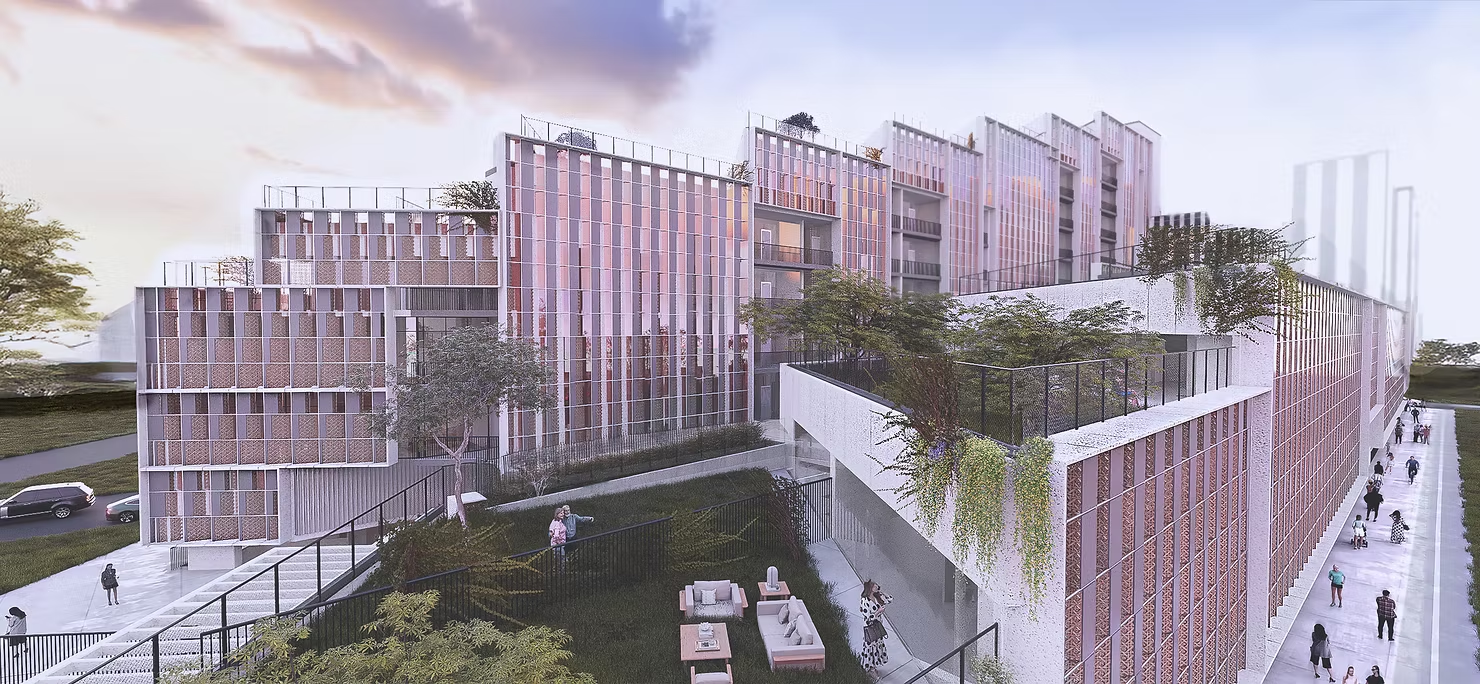Israeli architecture, shaped by a complex socio-political landscape and frequent security threats, continually evolves to incorporate advanced technological solutions that enhance safety, sustainability, and rapid deployment. The integration of algorithm-driven architecture offers promising avenues for addressing these challenges through modular, prefabricated designs, enhanced safety features, and resource self-sufficiency.

-
Enhanced Safe Rooms through Parameterized Modular Design
Wartime security necessitates robust safe rooms, or “miklat,” integrated into residential and public buildings. Algorithm-based architecture enables the precise modeling of safe rooms tailored to specific threat scenarios, optimizing space and structural integrity. By leveraging parametric algorithms, architects can rapidly generate multiple safe room configurations, ensuring compliance with safety standards while minimizing material use. These algorithms can automate the placement, size, and reinforcement of safe rooms within building plans, accelerating the construction process in emergency situations.
-
Self-Sufficient Resource Management
In environments prone to sieges or disruptions, buildings must operate independently of external resource supply chains. Algorithmically optimized designs can incorporate renewable energy solutions such as integrated solar panels and micro-wind turbines, along with modular water collection and filtration systems. AI-driven planning enables buildings to dynamically adjust resource usage, ensuring continuous energy and water supply even during power outages or supply blockades by isolating energy and water systems within the compound.
-
Accelerated, Cost-Effective Construction via Prefabrication
Parameterized design facilitates the creation of modular, prefabricated building components that can be mass-produced, transported, and assembled quickly on-site. This approach reduces construction time and costs significantly, a critical advantage during wartime when rapid deployment of protective or functional infrastructure is needed. The use of standardized, modular elements ensures consistency, reduces labor costs, and simplifies logistical challenges.
-
Elevated Green Areas for Radiation and Heat Absorption
In response to rising concerns about radiation and extreme heat, algorithmically designed elevated green roofs and walls can serve as natural barriers. These vegetated structures absorb radiation, mitigate heat, and improve overall urban resilience. The algorithms can optimize plant placement, soil depth, and irrigation needs to maximize environmental benefits while integrating seamlessly into the building’s architectural form.
-
Defense Against Arson Attacks
Recent increases in arson attacks call for incorporating fire-resistant features and strategic green buffer zones. Algorithm-based designs can automate the placement of fire-resistant barriers and firebreaks, as well as plan green spaces that act as fire retardants. Elevated green areas or modular fire-resistant walls can prevent the rapid spread of fires, providing additional security layers.
-
Challenging the Obsolete: Rethinking Basement and Subterranean Spaces
Traditional architecture often emphasizes basements and underground spaces, which involve costly excavation, potential structural vulnerabilities, and wasted space. Modern algorithmic planning encourages rethinking this approach by designing above-ground or semi-subterranean structures that optimize land use, reduce construction costs, and improve resilience against attacks or environmental threats. This shift promotes sustainable development by conserving resources and avoiding the logistical delays associated with deep excavations.
-
Resilience through Distributed Energy and Resource Systems
To counteract potential shutdowns of centralized energy and water supplies, algorithm-powered design can enable the creation of autonomous, localized resource hubs within compounds. These hubs incorporate renewable energy sources, energy storage systems, and water recycling units, isolating essential services and ensuring continuity during disruptions. Such solutions increase overall resilience, decrease dependency on external infrastructure, and allow for flexible scaling based on security needs.
-
The Need for Innovation in Architecture and Construction
Despite these technological advancements, many architects and contractors remain entrenched in traditional methods, often hesitant or slow to adopt algorithm-based, parametric, and prefabrication tools. This conservative approach limits the potential for rapid, safe, and sustainable responses to wartime needs. A cultural shift and training in computational design are vital to unlock the full potential of these innovations.
Israeli architecture’s response to wartime challenges is increasingly embracing algorithm-driven design to foster safer, more resilient, and sustainable environments. By rethinking conventional structures-eschewing obsolete basement-heavy designs, integrating modular prefabricated elements, and leveraging green infrastructure-architects and engineers can create adaptable, resource-efficient spaces. However, realizing these innovations depends on overcoming traditional mindsets and embracing the transformative power of technology to build a safer future amidst ongoing security concerns.
